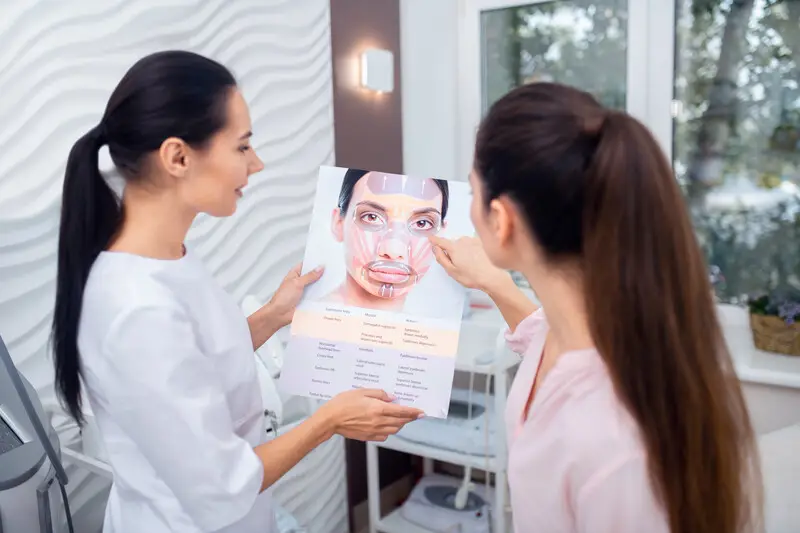- Published on: Jun 19, 2022
- 3 minute read
- By: Second Medic Expert
Understanding Hair Transplant From Experts
A hair transplant is a surgical procedure that moves hair follicles from a part of the body called the donor site to a bald or balding part of the body known as the recipient site. It is primarily used to treat male pattern baldness. Hair follicles are taken from the back of the head. The scalp on the back of the head is resistant to DHT and therefore DHT cannot cause hair loss in this area. The follicles are then placed into tiny incisions made in the balding area. The transplanted follicles will begin to grow hair within 4-6 months after surgery. New hairs will continue to grow for two or three years after surgery.
The most common type of hair transplant surgery is called Follicular Unit Transplantation (FUT), also known as "strip" surgery. In this procedure, a strip of skin containing hair follicles is surgically removed from the back of the scalp and then divided into small units called follicular units. These small units are then transplanted into the balding areas. A hair transplant is a surgical procedure that moves hair follicles from a part of the body called the donor site to a bald or balding part of the body known as the recipient site. It is primarily used to treat male pattern baldness.
Hair transplant surgery is performed by removing strips of hair-bearing skin from the donor area and then dissecting them into small grafts. The grafts are then placed in the recipient area. Surgery can be performed using a variety of methods, including strip harvesting, follicular unit extraction, and scalp reduction. A hair transplant is a surgical procedure that moves hair follicles from one part of the body to another. It is primarily used to treat baldness. Follicles are taken from the back of the head, where hair is still growing, and transplanted to the front or top of the head. Most patients have an acceptable outcome with minimal scarring.
Expert 4
There are two types of hair transplant procedures: Follicular Unit Strip Surgery (FUSS) and Follicular Unit Extraction (FUE). With the FUSS procedure, a strip of skin is removed from the back of the head where hair is usually thick. The strip is then cut into small units containing one to four hairs each. These units are transplanted to the bald or thinning areas.
With the FUE procedure, individual follicles are removed directly from the donor area one at a time using a tiny punch tool. The follicles are then transplanted to the bald or thinning areas. Because this method does not remove any skin, it can be used on people with very tight scalp
A hair transplant is a surgical procedure that moves hair follicles from one part of the body to another. It is mainly used to treat male pattern baldness. During a hair transplant, a surgeon removes a strip of skin from the back of the head and divides it into smaller strips. Each strip is then cut into small pieces that contain one or two hair follicles. The follicles are then transferred to the balding area.
Expert 5
Hair transplant is a surgical procedure that moves hair follicles from a part of the body called the donor site to a bald or thinning part of the body known as the recipient site. It is primarily used to treat male pattern baldness. When hair is transplanted, the surgeon takes healthy hair follicles from a donor site and implants them in the bald or thinning area. The follicles are generally taken from the back of the head, as this is typically where the hair is least affected by male pattern baldness. The surgery is relatively straightforward. The donor site is numbed with a local anesthetic, and then the surgeon uses a scalpel to make a small slit in the skin. He then removes individual hair follicles one at a time using very fine tweezers. The follicles are then placed into tiny holes in the bald or thinning area. Once implanted, the newly transplanted hair will fall out within two to four weeks.
Hair transplant surgery is typically performed under local anesthetic. Small patches of skin are removed from the donor site and then dissected into individual hair follicles. The hair follicles are then placed in small incisions at the recipient site. The procedure usually takes between four and eight hours, and it is generally recommended that patients have three sessions for optimal results.
Expert 6
A hair transplant is a surgical procedure that moves hair follicles from one part of the body to another. It is used to treat baldness or thinning hair. During the surgery, a surgeon will remove hair follicles from a donor site—usually the back of the head—and transplant them to the recipient site. The donor site often heals well and rarely shows any signs of surgery. Recipient sites can vary in size and shape, depending on the area being treated. The surgeon will try to create a natural-looking hairline and ensure that the transplanted hairs are distributed evenly throughout the recipient area.
Most hair transplants are successful, but there is always some risk of infection or scarring. A hair transplant is a surgical procedure in which hair follicles are transplanted from one part of the body to another. Baldness occurs when hair follicles stop producing hair, either because they are damaged or because they have been permanently lost. A hair transplant can restore hair to areas where it has been lost. The most common type of hair transplant is called Follicular Unit Transplantation (FUT). In FUT, a strip of skin containing many hair follicles is removed from the back or sides of the scalp and the follicles are then transplanted into the bald area. Another type of hair transplant is called Follicular Unit Extraction (FUE).










